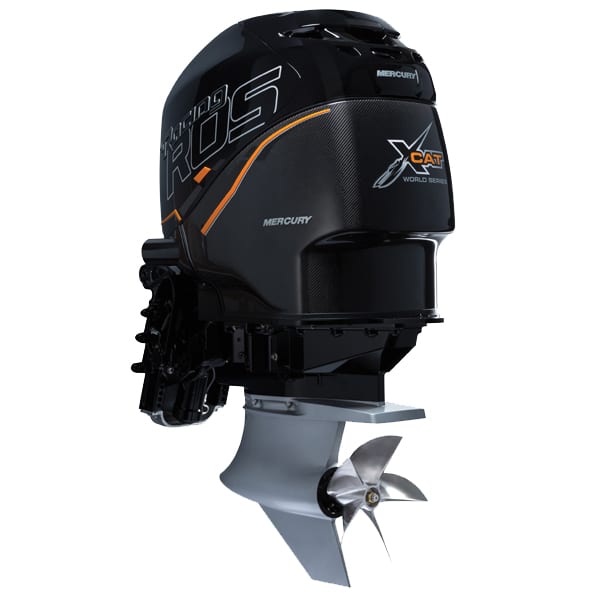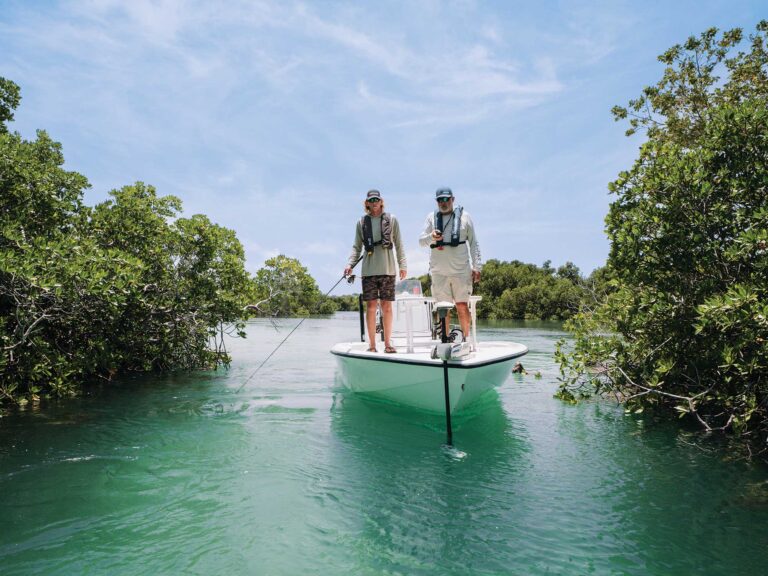
High-performance marine engines command high prices. Take the 400ROS outboard from Mercury Racing’s race lineup, for example. It retails for more than $49,000. Mercury Racing’s new 1550 sterndrive, which abides in the division’s consumer stable, goes for an astounding $230,200.
We asked Rick Mackie, senior marketing manager for Mercury Racing, to outline elements that define high-performance power plants, aside from the price tag.
1. Maxed-Out Motors
“We turn up the output and press rpm to the upper limit,” says Mackie, citing the Verado 400R . “The 400R is based on the Verado 350 production outboard,” Mackie says. “While the 350 is rated to 6,400 rpm and generates 350 hp, the 400R turns 7,000 rpm.”
2. Beefy Internals
To ensure high-performance durability, internal components are strengthened. The design, development, manufacture and hand-assembly of super-strong components are among the major reasons for the run-up in costs for high-performance marine engines.
3. Choice of Drives
Engines and drives are sold separately, and the buyer has a choice of drives. Merc Racing’s 1100 engine, for example, can mate with two different drives: the legendary MXT6 or the vaunted M8. “The boater can specify which drive system best matches his performance needs,” Mackie points out. These drives are designed with heavy-duty gears to withstand the incredible torque generated by high-performance engines.
4. Stronger Trim Systems
High-performance sterndrives and outboards feature heavy-duty trim and tilt systems.Mercury Racing’s OptiMax 300XS, for instance, comes with a more robust swivel and clamp bracket, Mackie points out. It also has one big single trim ram with a separate, heavy-duty trim pump.
5. Solid Mounts
Production outboards feature cushioned mounts to isolate engine vibration and minimize noise. “Cushioned mounts are good until you reach about 90 mph,” Mackie says. “After that, the softer mounts start to create handling problems.” High-performance outboard engines use solid mounts to better tie the boat and motor together.
6. Lab-Finished Props
Buyers of high-performance packages — be it outboard or sterndrive — usually opt for hand-worked (aka lab-finished) propellers to maximize the delivery of power to the water.
7. Individually Dyno’d
“Each Mercury Racing engine (except the Verado 400R) is tested on a dynamometer to ensure it meets its horsepower rating before it is sold,” Mackie says. After dyno testing, technicians pull the spark plugs and look inside the cylinders with a small video camera to make sure the engines are worn in correctly.
This meticulous procedure, which is impossible to pull off with production engines due to the distribution volume, also serves to break in the motor.
8. Limited Warranty
Don’t count on a long warranty when you buy a high-performance package. While warranty levels vary in the Mercury Racing line, terms are not as good as those for recreational motors. For instance, the Verado 400R carries a two-year limited warranty for recreational boating, with a three-year limited corrosion warranty. Yet that’s better than the 400ROS, which has no warranty.









